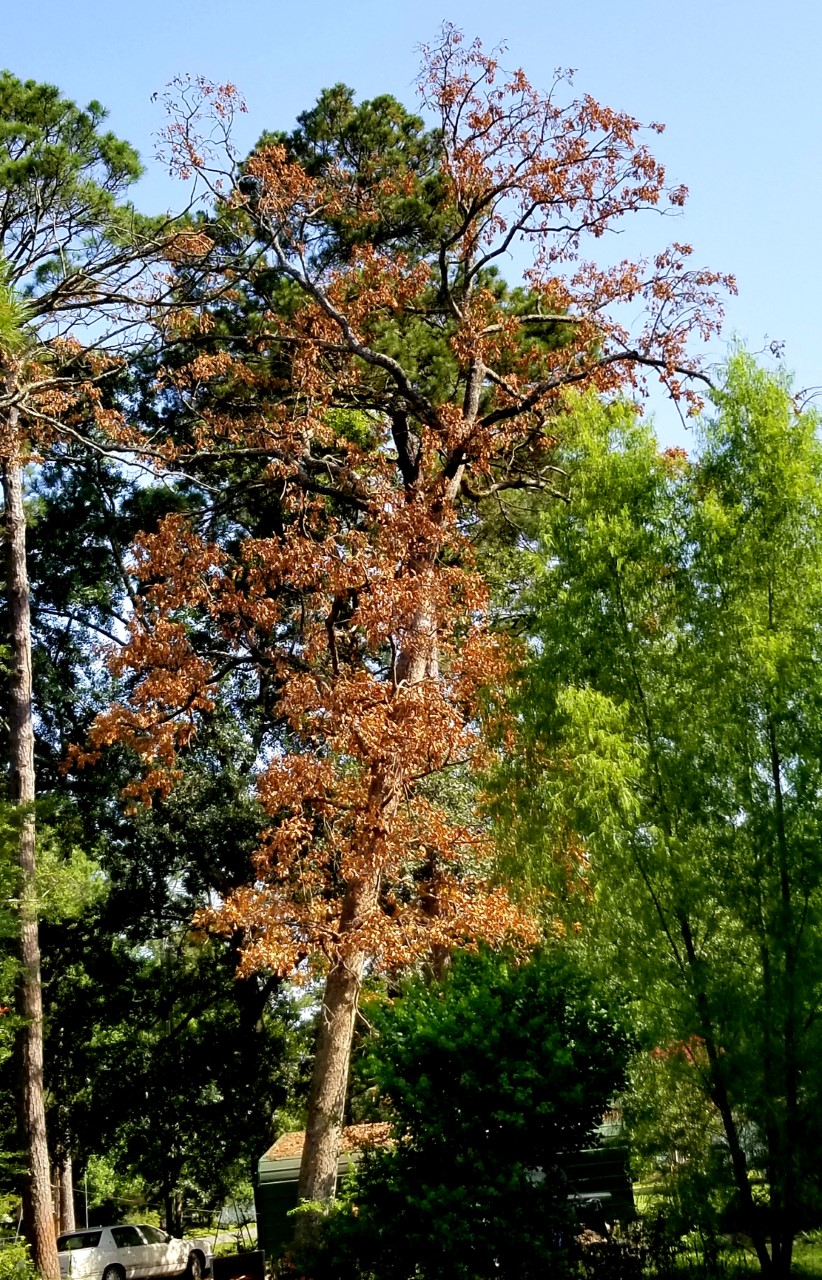Erratic weather, multiple pathogens may lurk behind ‘overnight flagging of oaks’
Is it 'oak wilt' or 'oak decline?'
Sept. 9, 2021
By Mary Hightower
U of A System Division of Agriculture
Fast facts
- Concerned Arkansans calling about scorched-looking oaks
- ‘Overnight flagging’ occurs over time
(240 words)
(Newsrooms: With art — https://flic.kr/p/2mngcNG)
LITTLE ROCK — 2021 has been tough on a lot of species, and Arkansas’ oaks are no exception, with leaves that have turned brown, look scorched and seemed to flag overnight.
“Over the past several weeks we have seen an increase in calls from our agents, landowners, and foresters regarding the rapid browning of oak trees, particularly post oak,” said Kyle Cunningham, extension and research forester for the University of Arkansas System Division of Agriculture.

Cunningham said there were concerns that the rapid decline might be from the fatal oak disease "oak wilt,” a fungal infection that’s serious threat to Arkansas forests.
“There is a phenomenon referred to as ‘oak decline.’ Often, the damage appears sudden but actually has been taking place for a period of time,” he said.
“However, our forest health experts are finding that the culprit could be the erratic weather patterns we have experienced this year and in recent years that cause cumulative effects on oak species,” he said. Underlying causes may include various leaf and branch diseases and insects.
Oak wilt has been found in northern Arkansas and remains a significant concern for all landowners, Cunningham said. “The oak decline event we seem to be experiencing this year will likely be temporary. Our oak forests are rugged and resilient, and capable of defending against injury when properly managed.”
Learn more about overnight flagging in oaks. Find forest health resource information from the Cooperative Extension Service: https://www.uaex.edu/environment-nature/forestry/health/.
To learn about extension programs in Arkansas, contact your local Cooperative Extension Service agent or visit www.uaex.uada.edu. Follow us on Twitter and Instagram at @AR_Extension. To learn more about Division of Agriculture research, visit the Arkansas Agricultural Experiment Station website: aaes.uada.edu. Follow on Twitter at @ArkAgResearch. To learn more about the Division of Agriculture, visit https://uada.edu/. Follow us on Twitter at @AgInArk.
About the Division of Agriculture
The University of Arkansas System Division of Agriculture’s mission is to strengthen
agriculture, communities, and families by connecting trusted research to the adoption
of best practices. Through the Agricultural Experiment Station and the Cooperative
Extension Service, the Division of Agriculture conducts research and extension work
within the nation’s historic land grant education system.
The Division of Agriculture is one of 20 entities within the University of Arkansas System. It has offices in all 75 counties in Arkansas and faculty on five system campuses.
Pursuant to 7 CFR § 15.3, the University of Arkansas System Division of Agriculture offers all its Extension and Research programs and services (including employment) without regard to race, color, sex, national origin, religion, age, disability, marital or veteran status, genetic information, sexual preference, pregnancy or any other legally protected status, and is an equal opportunity institution.
# # #
Media contact: Mary Hightower
mhightower@uada.edu